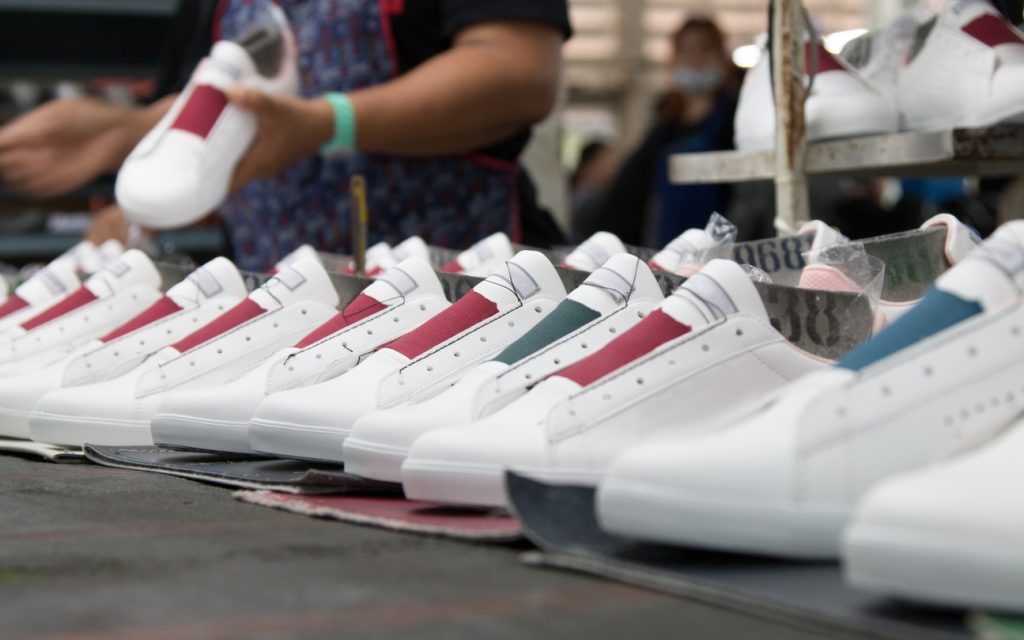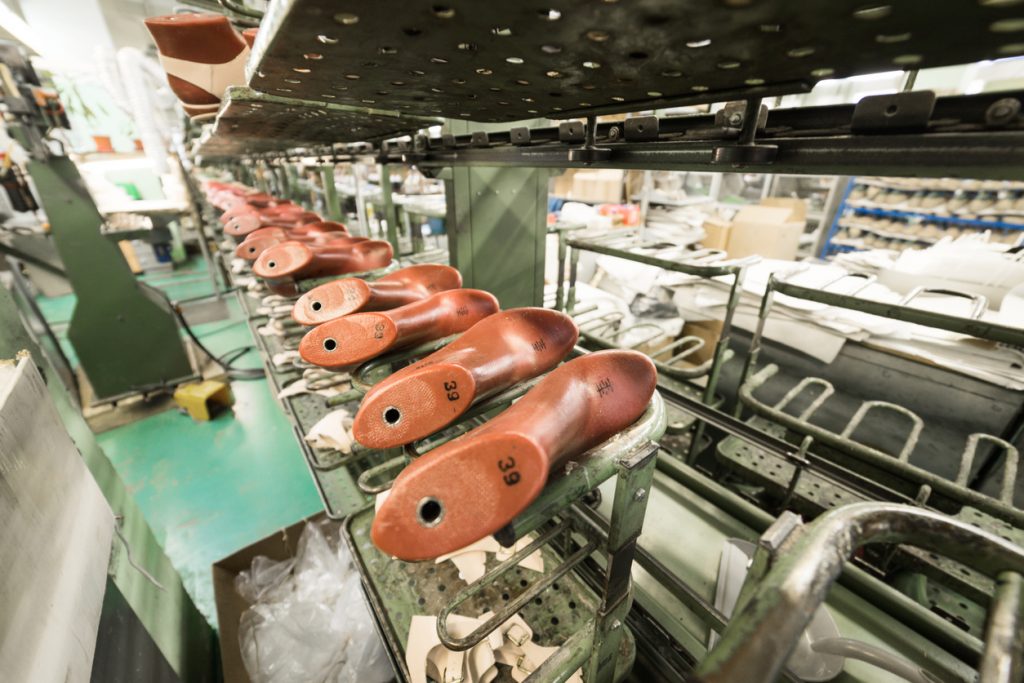Ways Recycled Footwear is Becoming More Popular

Around one-fifth (20%) of the climate impact from the apparel industry comes from footwear alone. On a global scale, around 1.4% of our total emissions come from our shoes. While that doesn’t seem like a lot, it’s staggering that a single type of clothing that’s supposed to last us years—and thus have less of an impact—contributes around 700M metric tons of CO2 per year.
If anything, it is clear that it’s high time we did something about our shoes.
The problem is that shoes are inherently difficult to recycle. They can be made of a wide variety of materials, often spanning up to 40 different components, making it challenging to take shoes apart and recycle each piece accordingly.
Additionally, there are a limited number of facilities that can cater to shoe recycling. The end result? Around 90% of the shoes we wear eventually end up in landfills.
But it’s not all bad news. Recycled footwear and more sustainable alternatives have begun to gain popularity and are slowly starting to pierce the conventional market. We will illustrate this through the points below.
The Rise of Circular Fashion

The idea of a circular economy has been floating around the sustainability industry for a few years now. Many think it’s an ambitious goal, but also aspire towards it—designing their systems to accommodate a more circular method of production.
This means take-back programs, integrating fewer material types into shoes, using more eco-friendly and recycled materials, and a cradle-to-cradle approach in production.
As circularity becomes more popular and becomes increasingly appreciated in fashion, it follows that a considerable amount of shoes are now made this way as well.
Even large retail brands are joining in the hype. Some big-name shoe companies are now releasing recyclable sneakers, implementing buy/take-back programs, and using recycled content in their footwear.
Increasing Customer Consciousness

In a time when information can be shared instantaneously, it’s no surprise that consumers are also more aware of how their products are made and how these processes can contribute to environmental degradation.
Today, close to half of the market is either concerned or conscious about the environmental impact of the products they buy. Most would even be willing to pay a small premium for environmentally friendly choices.
This increase in consumer consciousness also translates to a rising preference towards eco-friendly footwear such as vegan shoes versus conventional animal leather options (i.e., suede).
And as customers demand these types of products, already-established brands notice as well. Thus, there is now a growing market of easily accessible and affordable footwear made from recycled plastic bottles or tires, among many other materials.
A Growing Market for Sustainable Footwear

The sustainable footwear market was valued at around 7.5 billion USD during 2019 and is poised to increase in value at an average of almost 6% for the next seven years.
This growing market for sustainable footwear indicates both an increased demand and supply for sustainable products.
On the supply side, a couple of startups have come out in recent years—trying to overcome conventions in footwear production and creating shoes that are fully recyclable, biodegradable, and even compostable.
As the market grows, so does our ability to scale recycling to a point where collective action can take place.
In other words, a growing market for recycled, sustainable footwear gives way for more funding towards innovation in the industry, which could potentially reduce the costs of production and recycling.
And when that occurs, more people will have access to quality and affordable recycled footwear.
Sustainability is All the Rage

Perhaps one of the most compelling ways that recycled footwear is becoming more popular is to take a deeper look at the human condition and recognize one simple fact: that sustainability is cool. It’s trendy. It’s hip.
It’s not a shock to any of us that sustainability has been one of the top trends in nearly every industry known to us. Whether it is finance or fashion, farming or mining, there is always room for sustainability in the conversation.
And it isn’t just in the marketplace either. Social-based platforms have also been excellent drivers for making sustainability more popular. Influencers, celebrities, and artists alike are promoting the idea of becoming more eco-friendly in the products we purchase and the brands we support.
As usual, we see this manifest in recycled footwear as well. People are willing to purchase more eco-friendly options from classic retailers while also supporting local and emerging footwear brands.
Although sustainability shouldn’t be seen as merely a trend or a fad, we cannot deny the impact of pop culture on spreading awareness on the importance of sustainability.
Dealing With Plastic Waste

The issue of plastic pollution is one of the most (quite aptly) sensationalized and well-documented problems in the sustainability industry. And it isn’t without reason.
We produce and consume plastics at an incredible rate, generating a 200-fold increase from 1950 to 2015. And currently, there are around 8.3 billion tons of plastic in the world, with a majority of it being trash, creating a plastic pollution problem that disproportionately impacts countries with weak or nonexistent recycling systems.
The silver lining in this situation is that many brands are turning to recycled plastics like PET as materials for their footwear. There are now numerous footwear brands that proudly use recycled PET, polyester, and a host of other recycled materials in their shoes.
In doing so, they are significantly cutting down the environmental impact of their products. For instance, recycled polyester uses around 59% less energy and generates 32% fewer emissions compared to virgin polyester. When compounded over vast production systems, the change is tremendous.
However, the fact that plastics are being recycled into new products isn’t the ultimate answer. After all, these plastics still exist in some form and may still shed microfibers during their life cycle, leading us to our next and final point.
The Future: Reducing Consumption

The increasing popularity of recycled footwear and apparel is only the beginning—and certainly not the end.
For sustainability to truly take root in our practices, we must start at the very beginning: excessive production and consumption.
In 2018, the global production of footwear breached more than 24 billion pairs, with 2 billion shoes going to the U.S. alone. This means that the average American consumes close to 8 pairs of shoes per year, a vast majority of which will eventually end up in landfills.
And while buying recycled footwear is many steps above the norm today, it is not the only solution we should work towards. Perhaps more importantly, we should look into a collective change of consumer perception and try to tackle the issue from the very beginning— why we want to buy so many pairs in the first place.
And in doing so, we can actively champion a reduction in unnecessary consumption and drive demand for more durable, sustainable, and long-lasting pairs of shoes.
Author Bio
Crystal Toledano is a senior at SUNY New Paltz where she is involved in community work involving recycling. Connect with Crystal on LinkedIn
2 Comments
Comments are closed.
Beverley Jago
October 15, 2022 at 7:30 pmWould like as much information on footwear and sustainability plus recycling of same for an environmental talk at our yearly CWA conference. Would be much appreciated.
April
October 17, 2022 at 6:39 amPlease feel free to contact us at support@recyclecoach.com if you need assistance.